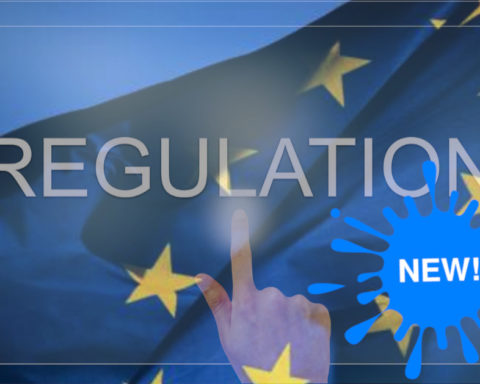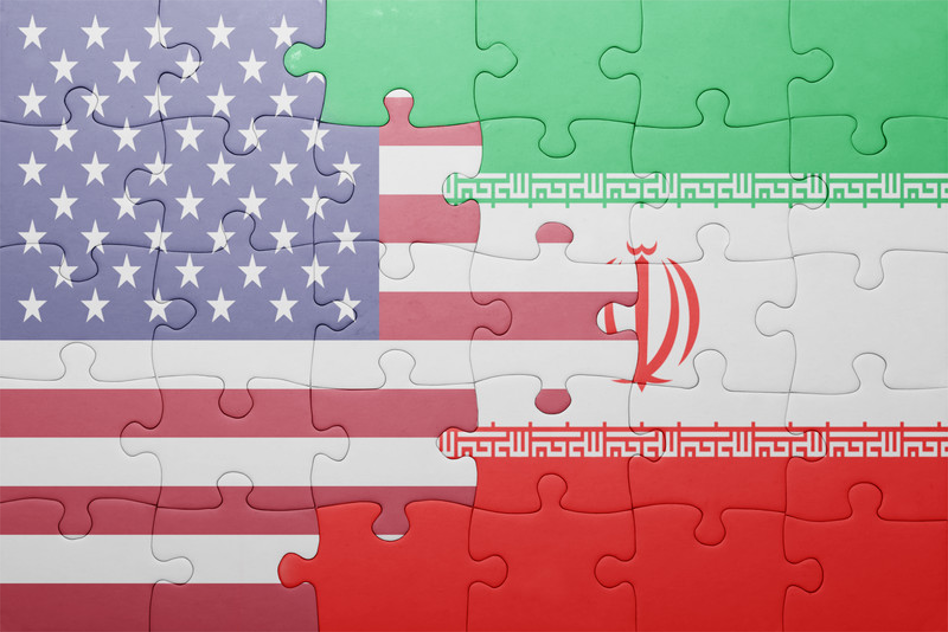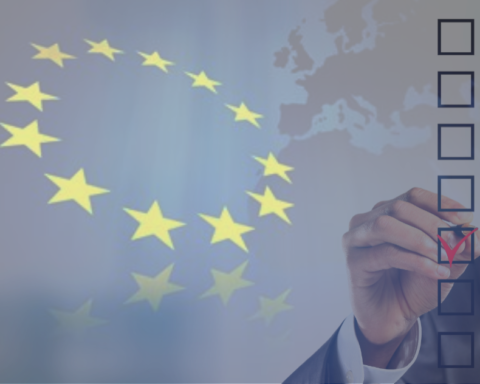 As discussed in our earlier post on the modernisation of the EU Dual-Use Regulation, it is the revised ‘catch-all’-provision that most worries exporters. The inclusion of human rights criteria, the corner stone of the new ‘human security’ approach in the Dual-Use Regulation, risks to lead to new uncertainties for exporters (and their national regulators).
As discussed in our earlier post on the modernisation of the EU Dual-Use Regulation, it is the revised ‘catch-all’-provision that most worries exporters. The inclusion of human rights criteria, the corner stone of the new ‘human security’ approach in the Dual-Use Regulation, risks to lead to new uncertainties for exporters (and their national regulators).
By Jochen Vankerckhoven & Gerard Kreijen, 30 November 2016.
Catch-all controls are a sort of fall-back for the national export control authorities which enables them to control items which do not (yet) qualify as dual-use (i.e. not listed as such in the Dual-Use Regulation), but may be used for weapons of mass destruction (“WMD”) (or nuclear purposes) or – in case the final destination is an arms embargoed country – for military purposes. It is a useful tool for Member States in a rapidly changing environment – both technically and politically. For businesses however it potentially implies an increased compliance burden and – worse – legal uncertainty.
The European Commission now intends to broaden the scope of the catch-all control by adding new end-uses; violation of human rights and acts of terrorism.
Catch-all: the current state of play
In deviation of the general rule of Article 3 of the Dual-Use Regulation which requires an authorisation for listed dual-use items, Article 4 constitutes the so-called ‘catch-all provision’ of the Regulation, which is used to control non-listed items that are or may be intended for the following end-uses:
- in connection with chemical, biological or nuclear weapons or other nuclear explosive devices or missiles capable of delivering such weapons (Article 4.1);
- for a military end-use if these items will be shipped to a country on which an arms embargo is imposed (Article 4.2);
- for use as parts or components of listed[1] military items that have been exported from the a Member State without authorisation or in violation of an authorisation prescribed by the national legislation of that Member State (Article 4.3).
The catch-all provision is in fact a legal instrument for the export control authorities to control lower-level dual-use items (not included in the Annexes) or any other non-listed items, when there is reason to believe such items can have one of the aforementioned end-uses. Catch-all controls generally focus on the (potential) end-use, rather than on the item itself. Nonetheless, in order to make the assessment whether a certain item could be controlled because of the end-use, the technical characteristics remain of importance (e.g. not every machine or equipment can be used in a nuclear plant because of the levels of the radiation). In principle, manufacturers of those items should be capable of making this assessment themselves, but this is obviously much harder for other parties in the supply chain.
The obligation to obtain an export license will be triggered if the competent authority has informed the exporter. The notion of ‘being informed’ is not further defined in the Regulation, nor is it explained in any additional guidance from the Commission. In practice this so-called notification to the exporter may differ from Member State to Member State and even within one Member State sometimes from case to case.
The catch-all within the catch-all is however paragraph 4 whereby an exporter who is aware of an intended end-use as mentioned in paragraph 1, 2 and 3 of Article 4, must inform the competent national export control authority which may then decide to subject the envisaged export to a licensing obligation. The responsibility to assess the potential diversion hereby clearly lies with the exporter. The term ‘being aware’ is not defined, but the wording makes it clear that there should be clear evidence in the hands of the exporter that the items will not be used for their usual application, but in the framework of one of the uses in paragraphs 1, 2 or 3. The wording of paragraph 5 (e.g. the so-called ‘suspicion clause’), which is optional for the Member States, confirms this.
Apart from the catch-all provision of Article 4, the Dual-Use Regulation already indirectly implemented public security and human rights concerns in Article 8 whereby these concerns can be taken into account upon deciding on the issuance of a license for listed items. National authorities, however, have been rather reluctant to use this provision in practice (see our previous post “Export controls as a toolbox for human rights policy”).
Previous proposals to widen the scope of the catch-all controls
The introduction of human rights in the catch-all provision was already proposed in 2012[2]. The proposal to amend Article 4 was to include the following paragraph:
“An authorisation shall also be required for the export of dual-use items not listed in Annex I if the exporter has been informed by the authorities referred to in paragraphs 1 and 2, or by the Commission, that the items in question are or may be intended, in their entirety or in part, for use in connection with a violation of human rights, democratic principles or freedom of speech as defined in the Charter of Fundamental Rights of the European Union, by using interception technologies and digital data transfer devices for monitoring mobile phones and text messages and targeted surveillance of internet use, such as via monitoring centres or lawful interception gateways.”[3]
This proposal was triggered by the Arab Spring events, but was far too specific taking into account the rapid evolution of new technologies. Besides that it seemed a contradictory that a ‘catch-all’-provision would be updated with a list of very specific items and end-uses. At least from a legislative perspective it makes more sense to include specific items in the definition of ‘dual-use’ items and its Annexes (see our previous post “Modernization of the EU export control system: What’s next? (I)”). The proposal was however never adopted.
Within the framework of the modernization of the Dual-Use Regulation, the European Commission has taken a broader approach whereby on the one hand the definition of dual-use items and the list of controlled items have been updated covering items that are subject to human rights violation concerns, and on the other hand also the update of the catch-all provision with human rights concerns. Thanks to the leaking of one of the draft proposals earlier this year we were able to get an insight in the drafting process of this particular provision. In this July 2016 version of the Recast proposal, the catch-all provision was extended to items:
(d) for use by persons complicit in or responsible for directing or committing serious violations of human rights or international humanitarian law in situations of armed conflict or internal repression in the country of final destination, and where there is evidence of the use of this or similar items for directing or implementing such serious violations by the proposed end-user;
(e) for use in connection with acts of terrorism.
By adding ‘human rights violations’ and ‘acts of terrorism’ as an end-use to the catch-all provision and erasing any reference to specific items or destinations, exporters will have to implement complicated (and subjective …) assessments in their export compliance system, without any further guidelines from the export control authorities on key concepts such as ‘human rights violations’ and ‘acts of terrorism’. With a view to legal certainty and foreseeability, it is mandatory for the export control authorities to at least describe the threat which they envisage or, list “sensitive” destinations (e.g. the military end-use of the current Article 4.2 is also restricted to arms embargoed countries) or even to provide a ‘white list’. However, both lists could evidently result in ‘de-risking’ policies whereby an exporter would cancel certain destinations, simply because the compliance risk (and costs) do not outweigh the benefits of trade. A clear description of the threat by the authorities would obviously also enable companies to anticipate and include appropriate end-use(r) provisions in their contracts and commercial documentation.
Adopted proposal to amend Article 4 of the Dual-Use Regulation
In the adopted proposal of the European Commission, some additional wording has been added compared to the ‘leaked’ draft. It seems that the European Commission took some of the concerns raised by the business into account. This led to the below insertions in the following amendment of the catch-all provision:
(d) for use by persons complicit in or responsible for directing or committing serious violations of human rights or international humanitarian law in situations of armed conflict or internal repression in the country of final destination, as identified by relevant public international institutions, or European or national competent authorities, and where there is evidence of the use of this or similar items for directing or implementing such serious violations by the proposed end-user;[4]
(e) for use in connection with acts of terrorism.
Unfortunately the reference to ‘international, institutions, or European or national competent authorities’ does not in itself provide much guidance for the exporters. Taken into account the different practices in the Member States whereby exporters are ‘being informed’ of unintended use of their exported items (e.g. from individual notifications to general publications in the ‘national gazette’) and the obligation for exporters themselves to notify the competent authorities when they are ‘aware’ of such potential unintended use, exporters will definitely need more guidance on how to apply these provisions.
When exactly is a jurisdiction identified by the relevant public international institutions, or European or national competent authorities as a jurisdiction that is affected by armed conflict or international repression? One could easily make a list of jurisdictions that could qualify as such based on Human Right Watch’s and other reports (and which are currently nowhere listed as sensitive countries), but this should not be the exporter’s call.
Apart from that, the EU legislator should also provide more guidance on what is exactly meant by ‘directing or committing serious violations of human rights or international humanitarian law’? Which human rights violations are actually envisaged? It goes without saying that where the “right to life” or “freedom from torture” is as such covered by multiple provisions, i.e. military or dual-use list-based controls as well as catch-all controls related to the military or WMD-end use, the “right to a fair trial” is not likely to benefit from more thorough controls on the flow of dual-use items.
Based on the discussions and debates preceding this proposal it is seems however that this new provision especially targets the freedom of speech and freedom of thought. Human rights and humanitarian law remain however very broad concepts which are difficult to implement in a companies’ compliance program.
The same goes for the introduction of a catch-all for items used in connection with acts of terrorism. No one will object to this additional control which should be differentiated from WMD or military end uses, but also here it remains difficult to assess the exact impact of this new provision.
According to the proposal itself, an act of terrorism shall mean a terrorist act within the meaning of Article 1(3) of Common Position 2001/931/CFSP. The definition of terrorism acts in this Position seems to be more of a political nature, stating that the acts should be “intimidating a population” or “destabilising or destroying the fundamental political, constitutional, economic or social structures”. Here also additional guidance would be welcome.
Convergence of EU catch-all controls
The assessment whether a non-listed item may require an authorization, is the exclusive competence of the individual Member States. Additional EU guidance on the new provisions will certainly result in a more efficient harmonization of the controls among the EU Member States. Besides that the new proposal already includes some targeted measures that should lead to a better harmonization of the catch-all controls. It introduces among other things the obligation for the Member State which is imposing an export licensing obligation based on the catch-all provision, to inform the other Member States (and the European Commission). As of that moment, the other Member States could make objections against such authorisation obligation for that specific case. If no objections are received, Member States should then impose authorisations requirements for all ‘essentially similar transactions’.
If however, objections are received, the requirement for authorisation imposed by the export control authority of the Member State will be revoked unless that Member State considers that an export might prejudice its essential security interests. Practice will learn whether or not that will effectively be a workable procedure for the 28 (27) Member States.
What will be the actual impact of these changes?
It remains at this stage difficult to assess the actual impact of these changes on the catch-all provision. Potentially it can certainly lead to more controlled items and – worse – to more (legal) uncertainties, but it must be said that at least under the current Regulation the different national export control authorities have used their power to impose a license based on the catch-all provision, with great prudence and caution.
Nonetheless, the broadening of the catch-all provision will likely increase the administrative burden on exporters, including revisions of an exporter’s internal compliance program and a review of its contracts and other commercial documentation.
As mentioned earlier, it can also not be excluded that exporters would adopt de-risking policies that could cut off entire jurisdictions from certain (essential) items and technologies. This has in recent years certainly been the effect of comprehensive economic sanctions against certain jurisdictions, but has also more and more been the result of soft law considerations such as Corporate Social Responsibility rules (CSR) whereby an operator adopts a self-regulatory mechanism based on certain ethical standards and national or international norms. As such the inclusion of human rights and humanitarian law considerations may ultimately not require a huge effort from an exporter. In this respect it can be worthwhile to refer to the OECD guidelines for Multinational Enterprises[5] which states the following: “Enterprises should […] [c]arry out human rights due diligence as appropriate to their size, the nature and context of operations and the severity of the risks of adverse human rights impacts.”
[1] Not specified, but it is generally accepted that the EU Common Military List is the list which art. 4.2 Dual-Use Regulation refers to.
[2] European Parliament legislative resolution of 23 October 2012 on the proposal for a regulation of the European Parliament and of the Council amending Regulation (EC) No 428/2009 setting up a Community regime for the control of exports, transfer, brokering and transit of dual-use items (COM(2011)0704 – C7-0395/2011 – 011/0310(COD)).
[5] OECD Guidelines For Multinational Enterprises, http://www.oecd.org/daf/inv/mne/48004323.pdf, see Chapter IV. Human Rights.
Authors of this post are :
- EU to Amend Union General Export Authorization in the Event of a No Deal Brexit - January 29, 2019
- Adoption of New EU Legislation and Recent National Cases in the Fight Against Chemical Weapons - October 24, 2018
- Shipping Criminal Liability: the Difficult Position of the Transportation & Logistics Sector - January 4, 2018









